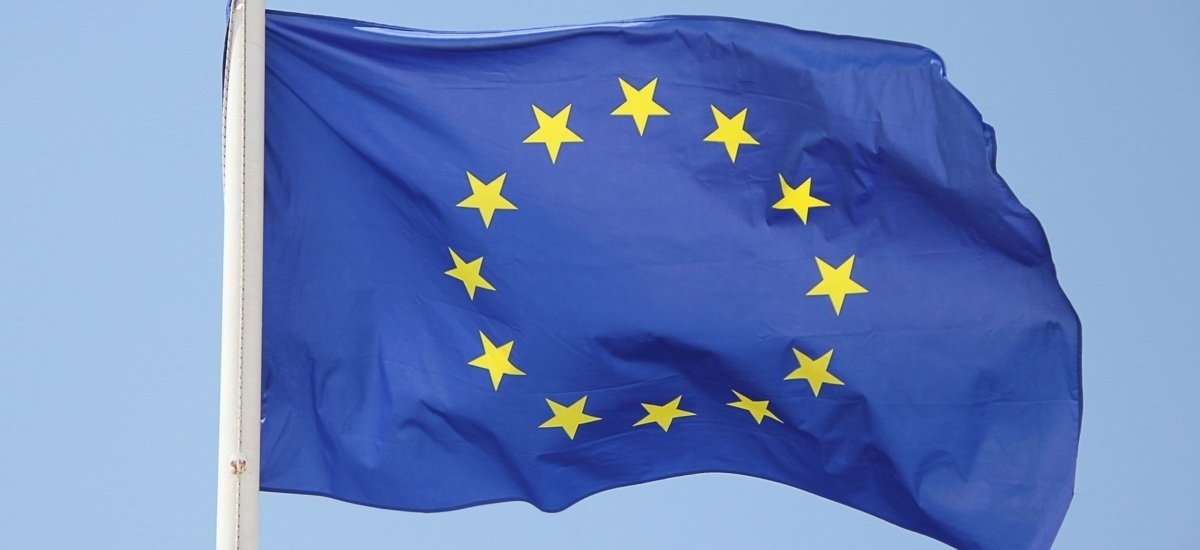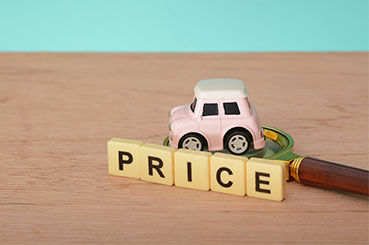Driving in Europe
If you’re planning a European road trip, then it is important you get to grips with some of the differences between driving in the UK and driving in Europe. In our comprehensive guide, we cover all aspects of driving in Europe from covering the requirements needed for driving in Europe to tips and advice on driving a UK car in Europe and even driving in Europe after Brexit. We also offer specific advice on driving in France and Germany, which remain two of the most popular road trip destinations for us Brits.
Driving in Europe Checklist
First things first, when you head on a European road trip there are some essential documents that you need to make sure you pack:
– Full valid driving licence
– Car insurance documents – make sure your insurance covers the countries you intend to travel to
– Valid passport – essential for crossing borders
– V5C certificate (vehicle logbook) as proof of ownership or hire documents if you have hired the vehicle
– Personal travel insurance documents – again make sure your insurance covers where you intend to travel and any activities you are planning to carry out
– European Breakdown Cover Documents – we think the extra expense of European breakdown cover will definitely prove its worth should you run into any problems with your car on your journey.
– A valid MOT certificate if your car is older than three years old

Essential Equipment for Driving in Europe
On top of the essential documents, some European countries require drivers to carry some basic equipment:
– Warning triangle – one triangle is compulsory in most European countries, however, if you’re heading to Spain you’ll need two, as in the event of a breakdown you need to place one in front and one behind your vehicle.
– Headlamp beam deflectors are necessary as most of Europe drive on the opposite side of the road. Although, if your headlights are manually adjustable, then just adjust them so they won’t blind other drivers.
– Carrying a breathalyser is a compulsory requirement in France.
– Emissions sticker – A sticker that clearly identifies vehicles emissions levels, is essential if you are planning to head to some European cities. The emissions stickers can usually be bought online prior to your journey from the official state website of the area you are heading. Getting caught without the appropriate emissions sticker can result in a fairly hefty fine so it is not worth risking it.
– A GB Car Sticker is required for driving in Europe if your car doesn’t have a GB Euro number plate.
– A first aid kit is not only a sensible piece of kit to carry, in certain countries like Austria it is actually a legal requirement.
– If you are a glasses wearer then in some European countries you are required to carry a spare pair in the car with you (for example France and Spain).
– A reflective jacket for each occupant of the vehicle (kept in the cabin of the car).
– If you’re heading somewhere there is likely to be snow, bear in mind that in some European countries it is necessary to carry snow chains.

Useful Additional Equipment
Finally, while the following items are not essential they will be indispensable on any long car journey:
– Fire extinguisher
– Replacement headlight bulbs
– High-quality torch and spare batteries
– Jerry can (a great idea if you’re travelling off the beaten track and fuel stations may be few and far between)
– Spare water and engine oil so you can top up as needed
– Satnav & a paper map that will cover your entire route (just in case you lose GPS reception)
– Photocopies of any essential documents in case you lose the originals
– Monetary change in the currency of the countries you are intending to visit will come in useful for toll roads and parking
– Hands-free setup for your phone, if your car doesn’t have automatic connectivity, as like in the UK, using a hand-held mobile phone while driving is prohibited in many countries

Driving a UK car in Europe
Some people may be concerned about driving a UK car in Europe, however, it is relatively straightforward once you get to grips with a few basics. The hierarchy of European roads is largely similar to the UK with main routes like the autobahn/autoroute (equivalent to UK motorways), primary roads (similar to A roads) and secondary roads (much the same as our B roads).
Like in the UK, when driving in Europe all the car’s occupants are required to wear a seatbelt and the use of mobile phones without hands-free is prohibited. However, there are some significant differences to bear in mind:
Driving on the right side of the road
Most European countries drive on the right, the exceptions being Ireland, Cyprus and Malta (and of course us here in the UK). This means if you are travelling in a UK car then you will be most likely driving in the opposite position (the right) to most European drivers.
It is important to take your time at road junctions and roundabouts, to make sure you stay on the right side of the road.
You should make sure you adjust your mirrors to ensure that they still offer full visibility of the road.
You will also need to fit headlight converters or if possible adjust your headlights so that they are correctly positioned and will not dazzle other road users.
Toll Roads
Toll roads are more common in Europe than they are in the UK, so it is a good idea to have loose change in the relevant currency close to hand. Many toll roads are avoidable, and most satnavs come with a setting so that you can avoid them. Although bear in mind that doing so may mean travelling on less established roads and as a result may increase your driving time.
Take your time
It’s a good idea to leave yourself plenty of time when planning to drive in Europe, as this will give you the time and opportunity to adjust. Planning your route in advance can also help as it will ensure you can stay calm and focused on the road.
Popular European Destinations
France and Germany remain the two most popular destinations for Brits heading on a European driving holiday. France not only offers a wealth of history, great beaches and the delights of the Alps but also provides a handy gateway to the rest of Europe, with regular ferry and Eurotunnel crossings. While Germany is a must-visit destination for any petrol head who is keen to experience the Autobahn.
Driving in France
If you’re planning to drive in France it is worth getting to grips with some basic principles before you head off on your journey.
City Driving
To drive into some French cities you are required to display a Crit’Air clean air sticker (emissions sticker) and it is advisable to purchase this prior to travel.
Speed Limits
While there are national speed limits on different road types in France, you must also bear in mind that these limits vary under certain conditions. For example, in rain or poor visibility, the maximum national speed limits are lower. On top of this, people who have held a licence for less than three years are subject to lower limits.
Breakdowns
In France, you should not call your breakdown recovery company if the event of a breakdown. If you’re on a motorway or toll road then you should use the orange emergency phone on the roadside. A local firm will then tow you to a recovery zone and it is at this point that you can contact a breakdown company of your choice.
Child Seats
In France, children under ten must be in an approved child seat or restraint that is suitable for their age and size. On top of this, children under ten are not permitted to travel in the front seats unless there are no rear seats, the rear seats are already fully occupied by children under ten or there are no seatbelts in the rear seats.
Parking Regulations
In France, a single yellow line means both parking and stopping are forbidden, so you should never park there. Other local parking restrictions are indicated by signs, so it is important to check before you decide to park. Carrying a French to English dictionary or phrasebook is invaluable should you need to translate any writing.
Drink Driving
While France may be well known for its fine wines, the maximum blood alcohol limit for drivers is actually lower in France than it is in the UK. The general limit is 0.05%, while for those who have held a licence for less than three years it is a mere 0.02%.
Our advice is not to risk it if you are planning to drink, use public transport or a taxi. Even the morning after it’s important to make sure you don’t set off driving again until you are safely under the limit.

Driving in Germany
The rules and regulations of German roads vary slightly to those in the UK, being aware of the below points will help ensure you have a hassle-free journey.
City Driving
Just like in France, there are tight emission procedures in place in some cities so it is important to display a German emissions sticker or you may face a fine.
Speed Limits
In most built-up areas the speed limit in Germany is 50km/h unless otherwise indicated by road signs. The definition of a ‘built-up area’ is from the start of the place name shown at the beginning and end of a town or village.
On the autobahn, many people wrongly believe that it carries no speed limit but this is far from the case and is addressed fully in the autobahn section below.
Child Seats
Just like in the UK, it is the driver’s responsibility to ensure that children are safely restrained, so it is important you read the following regulations.
In Germany, children up to twelve years of age or less than 1.5m tall are required to travel in an approved car seat or booster. Children under three years of age are not permitted to travel in any moving vehicle without a suitable car seat and no rear-facing child car seat is allowed in the front passenger seat if it has an airbag.
Parking Regulations
A vehicle is considered to be ‘parked’ in Germany if it remains stationary for more than three minutes.
There are a number of common sense instances where parking is prohibited including within 5m of a pedestrian crossing or intersection, 10m before traffic light signals and 15m of a sign indicating public vehicle stop. Parking is also prohibited where signposted and in front of the vehicular entry to a property.
While clamping isn’t common in Germany, parking in a prohibited area can result in a fine or your vehicle being towed away if it is considered to be an obstruction.
As with driving in France, it is advisable to familiarise yourself with common road signs.
Drink Driving
Like in France, the legal blood alcohol limit in Germany is 0.05%, however, the rules are considerably stricter for young and novice drivers who face a total alcohol ban. There is a strict 0% blood alcohol limit for drivers under 21, or any drivers with less than two years driving experience, with severe penalties dished out for non-compliance.
AutoBahn
Many people heading to Germany want to experience the Autobahn which is often hailed as one of the greatest driving experiences. However, there is far more to German motorways than just putting your foot to the floor. Contrary to popular belief there are speed limits in force on various sections of the Autobahn, and these are often strictly monitored by police. Many stretches of the autobahn use dynamic speed limits, which respond to changing conditions, i.e. in heavy rain, the speed limit is likely to be reduced.
In sections of the Autobahn where a speed limit is not in place, there remains an advisory limit of 130km/h, although people do travel above these speeds.
On the autobahn, you must move into the left lane to overtake, it is illegal to overtake to the right. You should move back into the right-hand lane as soon as you have passed the vehicle to free up the faster lane.
Cars travel considerably faster than on UK roads, so it is imperative you double-check your mirrors before pulling out into a left-hand lane.
In the unlikely event, you get stuck in heavy traffic on the autobahn, you should move as far to the left or right (depending on which lane you are in) as possible to create a channel in the middle of the two lanes to give emergency vehicles access.
Following the rules and regulations of the Autobahn will ensure you have a trouble-free journey and an enjoyable experience. In fact, for many, there is no greater motoring experience!

Driving in Europe after Brexit
Currently, Brexit is still very much in the air, with the prospect of leaving the EU without a deal still very much a possibility. But what effect will this have on Brits driving in Europe?
The first thing to note is that after 29 March 2019 drivers may need to carry an International Driving Permit (IDP) to drive abroad. This is a relatively old-fashioned ‘card document’ that you need to apply for in-person at a participating Post Office for a small fee. There are three different IDPs and the Post Office will be able to advise you on which you need depending on the country or countries you are travelling to.
Ireland is the only exception to this rule as it doesn’t currently require IDPs to be held by driving licence holders from non-EU countries.
In addition to the IDP, if we leave Europe with ‘no deal’, then we may also be required to carry additional documentation to drive in the EU and EEA. It is likely you may need to carry a motor insurance Green Card, an international insurance certificate to prove your policy provides minimum cover.
Finally, in the event of no-deal UK residents involved in a road traffic accident in Europe are unlikely to be able to make a claim via a UK-based claims representative, or UK Motor Insurers Bureau. Instead, it is likely you will have to make a claim in the country the accident occurred in.

Driving in Europe – A wealth of opportunity
Driving in Europe is a great way to see more of the country you are visiting, and gives you the opportunity to get a different perspective than you would get from being holed up in a resort. As such, we hope this guide has provided you with the information and confidence to plan your own European road trip. While there are some things to bear in mind, many of the general driving principles are similar, and most people have few problems adapting.
If you’ve been inspired and are keen to get planning a drive across Europe, then why not take a look at some popular travel bloggers favourite road trip destinations, which includes not only European destinations but also road trips in far-flung places like South Africa and the Philippines?
Blog Comments
To view, comment or reply to comments you must be logged into facebook



